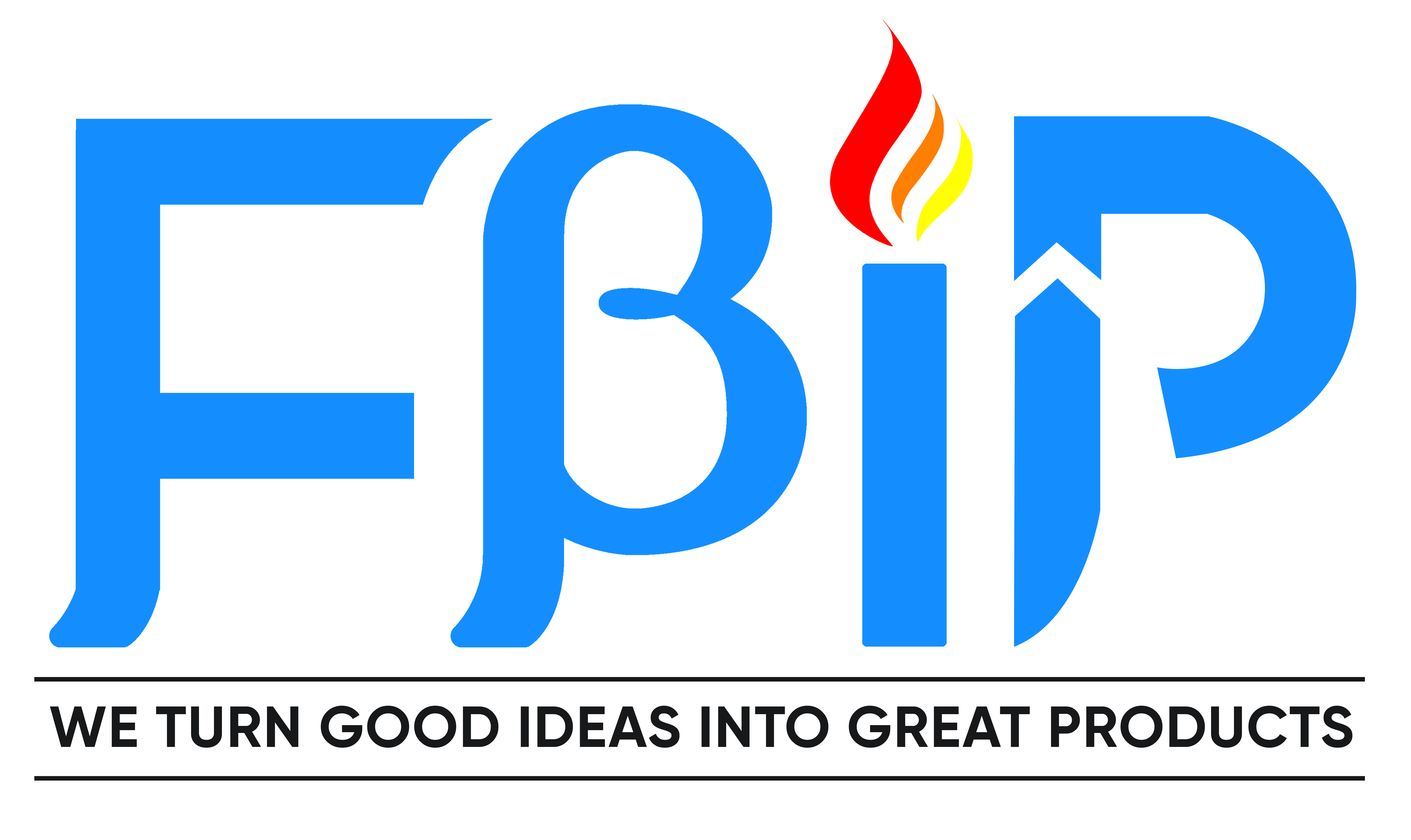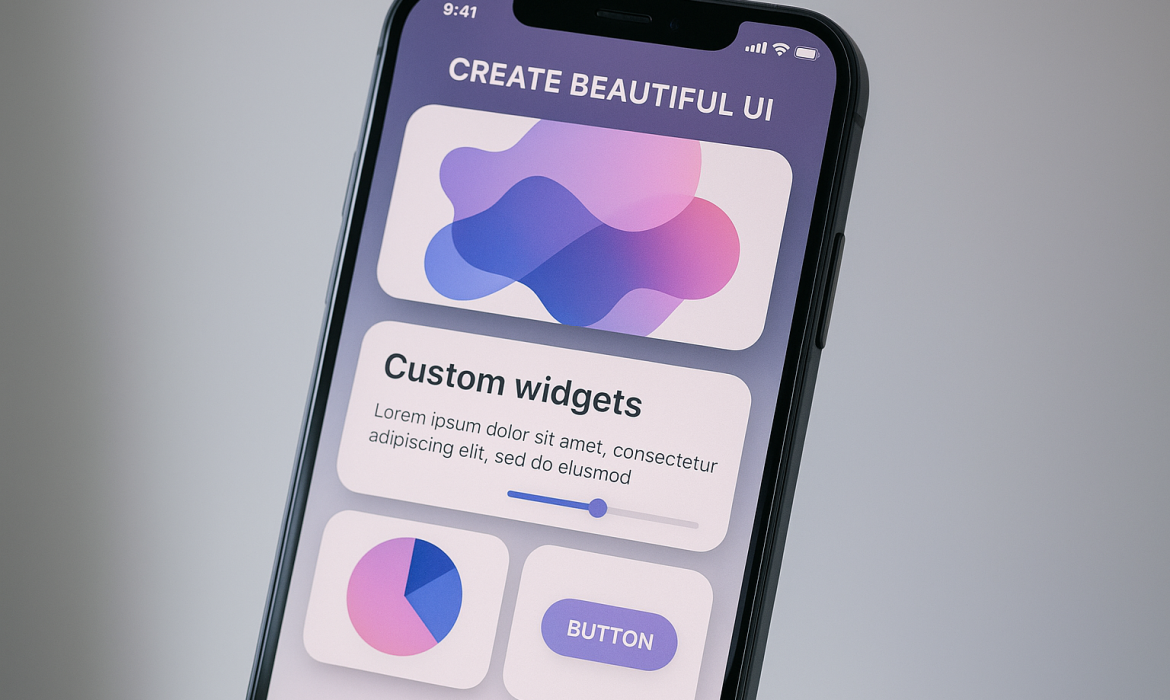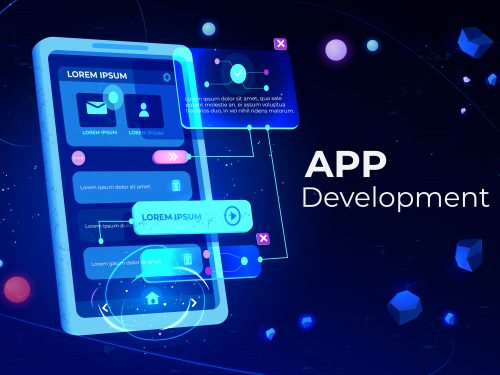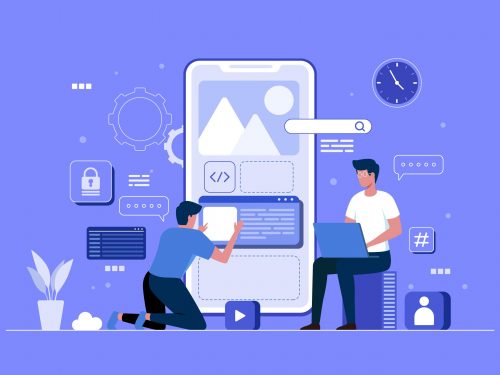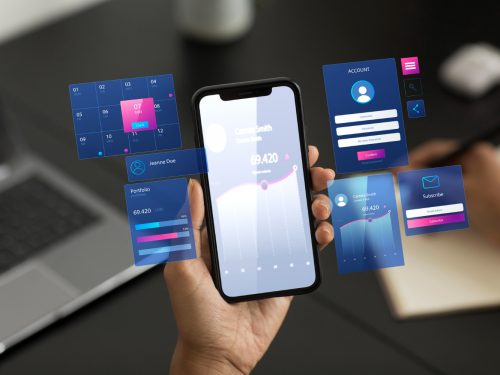Modern mobile applications demand stunning user interfaces that captivate users from the first interaction. Flutter has revolutionized how developers approach UI creation, offering unprecedented flexibility through custom widgets. Whether you’re building the next breakthrough app or enhancing existing projects, mastering Flutter’s custom widget system is essential for creating interfaces that stand out in today’s competitive market.
Flutter’s widget-based architecture provides developers with powerful tools to craft unique, responsive, and visually appealing user interfaces. Custom widgets enable you to move beyond standard components, creating bespoke design elements that perfectly align with your brand identity and user experience goals. This comprehensive guide explores advanced techniques for building beautiful Flutter UIs that engage users and drive business success.
The challenge many developers face isn’t just creating functional interfaces—it’s designing experiences that feel intuitive, perform smoothly, and maintain visual consistency across different devices and screen sizes. Custom widgets solve this problem by providing reusable, maintainable components that can be tailored to specific design requirements while maintaining optimal performance.
Understanding Flutter’s Widget Architecture
Flutter’s revolutionary approach to UI development centers around widgets as the fundamental building blocks. Unlike traditional UI frameworks that separate layout, styling, and behavior, Flutter unifies these concepts into a single widget system. This architecture enables developers to create highly customized interfaces with remarkable efficiency and precision.
Every element in a Flutter application is a widget, from simple text displays to complex animations and interactive components. This widget-centric approach provides unprecedented flexibility for UI customization. When you understand how widgets compose and interact, you unlock the ability to create truly unique user experiences that differentiate your applications from competitors.
The widget tree structure in Flutter allows for efficient rendering and updates. When creating custom widgets, you’re essentially extending this tree with your own specialized components. This approach ensures that your custom elements integrate seamlessly with Flutter’s performance optimization mechanisms, including hot reload capabilities and efficient rendering pipelines.
Stateless and stateful widgets form the foundation of custom widget development. Stateless widgets are immutable and perfect for static UI elements, while stateful widgets manage dynamic content and user interactions. Understanding when to use each type is crucial for creating performant, maintainable custom widgets that scale with your application’s complexity.
Building Foundation Custom Widgets
Creating your first custom widget requires understanding Flutter’s widget composition patterns. The most effective approach involves identifying reusable UI patterns in your application and abstracting them into dedicated custom widgets. This strategy reduces code duplication while establishing consistent design patterns throughout your project.
Custom widgets should follow the single responsibility principle, focusing on one specific UI function or visual element. For example, a custom button widget might handle specific styling, animations, and interaction feedback while remaining flexible enough to accommodate different text labels and callback functions. This approach ensures your widgets remain maintainable and reusable across different contexts.
The process of building custom widgets involves extending either StatelessWidget or StatefulWidget classes. Your custom widget’s build method returns a widget tree that defines the visual structure and behavior. This tree can incorporate existing Flutter widgets, other custom widgets, and complex layout combinations to achieve your desired design goals.
Parameter passing and widget configuration are essential aspects of custom widget design. Well-designed custom widgets accept parameters that allow customization without requiring code modifications. This includes styling parameters, callback functions, and content data. Proper parameter design makes your widgets flexible and reusable across different application contexts.
Advanced Styling and Theming Techniques
Flutter’s theming system provides powerful tools for creating consistent, beautiful interfaces across your entire application. Custom widgets should integrate seamlessly with your app’s theme data, ensuring visual consistency while maintaining the flexibility to override specific styling when necessary. This approach creates a cohesive user experience that feels polished and professional.
Color schemes and typography play crucial roles in creating visually appealing custom widgets. Flutter’s Material Design and Cupertino design systems provide excellent starting points, but custom widgets allow you to extend beyond these constraints. Implementing custom color palettes, typography hierarchies, and spacing systems helps establish unique brand identity through your application’s interface.
Gradient backgrounds, custom shadows, and advanced visual effects can transform ordinary widgets into stunning UI elements. Flutter’s painting system provides low-level access to graphics rendering, enabling sophisticated visual effects that would be challenging to achieve with standard widgets. These techniques are particularly valuable for creating hero elements and attention-grabbing interface components.
Responsive design considerations are essential when creating custom widgets. Your widgets should adapt gracefully to different screen sizes, orientations, and device types. This involves implementing flexible layouts, scalable typography, and adaptive spacing that maintains visual hierarchy across various display configurations. Responsive custom widgets ensure consistent user experiences regardless of the target device.
Animation and Interaction Design
Animations breathe life into Flutter applications, transforming static interfaces into engaging, dynamic experiences. Custom widgets provide the perfect vehicle for implementing sophisticated animations that enhance user interaction and provide valuable feedback. Well-crafted animations guide users through your application’s functionality while creating memorable experiences.
Flutter’s animation framework offers multiple approaches for implementing custom animations. Implicit animations provide simple, declarative ways to animate widget properties, while explicit animations offer precise control over timing, curves, and complex animation sequences. Understanding when to use each approach enables you to create smooth, performant animations that enhance rather than distract from your application’s core functionality.
Gesture recognition and touch interactions are fundamental aspects of modern mobile interfaces. Custom widgets can implement complex gesture handling, including multi-touch interactions, custom drag behaviors, and sophisticated touch feedback systems. These capabilities enable you to create intuitive interfaces that respond naturally to user input patterns.
Performance optimization becomes critical when implementing animations in custom widgets. Flutter’s rendering pipeline includes specific optimizations for animated content, but custom widgets must be designed to take advantage of these features. This includes proper use of animation controllers, efficient widget rebuilding strategies, and careful management of expensive operations during animation sequences.
State Management in Custom Widgets
Effective state management is crucial for creating robust, maintainable custom widgets. Flutter provides several approaches for managing widget state, from simple setState calls to sophisticated state management solutions like Provider, Bloc, or Riverpod. Choosing the right approach depends on your widget’s complexity and its relationship to broader application state.
Local state management within custom widgets handles internal widget behavior and appearance changes. This includes managing animation states, form input validation, and temporary UI states that don’t need to persist beyond the widget’s lifecycle. Proper local state management ensures your custom widgets remain self-contained and reusable.
Global state integration allows custom widgets to interact with application-wide data and state changes. This capability is essential for widgets that display dynamic content, respond to user authentication states, or participate in complex application workflows. Well-designed state integration maintains clear separation between widget logic and business logic.
State persistence and restoration capabilities ensure that your custom widgets maintain their state across application lifecycle events. This includes handling device orientation changes, app backgrounding, and system-initiated process termination. Robust state management creates seamless user experiences that feel reliable and polished.
Performance Optimization Strategies
Performance optimization is paramount when creating custom widgets for production applications. Flutter’s widget system includes sophisticated optimization mechanisms, but custom widgets must be designed to work effectively within these constraints. Understanding Flutter’s rendering pipeline helps you create widgets that perform efficiently even in complex, data-heavy applications.
Widget rebuilding optimization involves minimizing unnecessary widget reconstructions during application updates. This includes proper use of const constructors, efficient key usage, and strategic widget composition that isolates expensive operations. These techniques ensure your custom widgets contribute to smooth, responsive user interfaces.
Memory management considerations become important when custom widgets handle large datasets, complex graphics, or extensive animation sequences. Proper resource cleanup, efficient data structures, and careful lifecycle management prevent memory leaks and ensure consistent application performance over extended usage periods.
Profiling and debugging tools help identify performance bottlenecks in custom widgets. Flutter’s performance overlay, widget inspector, and profiling tools provide detailed insights into widget behavior and performance characteristics. Regular performance analysis ensures your custom widgets maintain optimal performance as your application evolves.
Testing and Quality Assurance
Comprehensive testing strategies ensure that custom widgets function correctly across different scenarios and device configurations. Flutter’s testing framework provides tools for unit testing widget logic, widget testing for UI behavior verification, and integration testing for complex user interaction flows. Proper testing coverage builds confidence in your custom widget implementations.
Widget testing involves verifying that custom widgets render correctly, respond appropriately to user interactions, and maintain proper state management. This includes testing edge cases, error conditions, and boundary value scenarios that might occur in production usage. Thorough widget testing prevents unexpected behavior and ensures consistent user experiences.
Accessibility testing ensures that custom widgets work effectively with screen readers, keyboard navigation, and other assistive technologies. Flutter provides comprehensive accessibility support, but custom widgets must be designed with these considerations in mind. Accessible custom widgets expand your application’s reach and demonstrate commitment to inclusive design principles.
Cross-platform compatibility testing verifies that custom widgets function correctly across different operating systems, device types, and screen configurations. This includes testing on various Android and iOS devices, different screen densities, and multiple Flutter versions. Comprehensive compatibility testing ensures consistent user experiences across your target platform range.
Real-World Implementation Examples
Practical implementation examples demonstrate how custom widgets solve real-world development challenges. Consider a custom rating widget that combines interactive stars, smooth animations, and accessibility features. This widget showcases proper state management, gesture handling, and visual feedback while remaining reusable across different application contexts.
E-commerce applications benefit from custom product card widgets that display product information, images, and interaction controls in visually appealing layouts. These widgets demonstrate advanced styling techniques, image handling, and integration with application-wide state management systems. Custom product cards create consistent shopping experiences that drive user engagement and conversion rates.
Dashboard and data visualization widgets showcase Flutter’s capabilities for creating complex, interactive interfaces. Custom chart widgets, progress indicators, and data summary cards demonstrate advanced painting techniques, animation integration, and responsive design principles. These examples highlight how custom widgets can transform complex data into intuitive, actionable user interfaces.
Social media and communication applications leverage custom widgets for message bubbles, user profile displays, and interactive content elements. These widgets demonstrate text handling, image integration, and complex layout management while maintaining smooth scrolling performance and responsive design across different device types.
Advanced Customization Techniques
Custom painting provides the deepest level of control over widget appearance and behavior. Flutter’s CustomPainter class enables you to create entirely unique visual elements using low-level graphics operations. This capability is essential for creating specialized widgets like custom charts, signature capture interfaces, or unique brand elements that distinguish your application.
Shader integration allows custom widgets to leverage GPU acceleration for advanced visual effects. Flutter’s shader support enables sophisticated graphics processing that was previously limited to game development frameworks. These capabilities open new possibilities for creating stunning visual effects and immersive user experiences within business applications.
Platform-specific customizations enable custom widgets to take advantage of unique platform features while maintaining cross-platform compatibility. This includes integrating with platform-specific design guidelines, accessing native functionality, and adapting to platform-specific user interaction patterns. Strategic platform customization creates native-feeling experiences while leveraging Flutter’s development efficiency.
Third-party library integration expands the capabilities of custom widgets by incorporating specialized functionality from the Flutter ecosystem. This includes animation libraries, graphics processing tools, and UI component libraries that provide advanced features. Effective library integration accelerates development while maintaining code quality and performance standards.
Future-Proofing Your Custom Widgets
Flutter’s rapid evolution requires custom widgets to be designed with future compatibility in mind. This involves following Flutter’s official best practices, staying updated with framework changes, and designing widgets with flexible architectures that can adapt to new Flutter features and capabilities. Future-proof widgets protect your development investment and ensure long-term maintainability.
Version compatibility strategies help custom widgets work across different Flutter versions and dart language updates. This includes proper dependency management, deprecation handling, and migration planning for major framework updates. Robust version compatibility ensures your custom widgets remain functional as your development environment evolves.
Documentation and knowledge sharing practices ensure that custom widgets remain maintainable as development teams grow and change. Comprehensive documentation, clear code examples, and practical usage guidelines help team members understand and effectively utilize these custom widgets. Good documentation not only accelerates development but also reduces maintenance overhead, making it easier for new developers to onboard and contribute. When exploring the Top 10 Apps Built with Flutter, it’s clear that robust documentation and shared knowledge have been key factors in maintaining consistent, scalable UI components across large teams. This reinforces how crucial it is to invest in proper documentation from the start.
Community contribution opportunities allow you to share valuable custom widgets with the broader Flutter community. Publishing reusable widgets through pub.dev or open-source repositories contributes to the ecosystem while building your professional reputation. Community engagement also provides valuable feedback that improves widget quality and functionality.
Conclusion
Creating beautiful UI in Flutter with custom widgets represents a transformative approach to mobile application development. The techniques and strategies outlined in this guide provide the foundation for building stunning, performant, and maintainable user interfaces that distinguish your applications in competitive markets.
Custom widgets unlock Flutter’s full potential for creating unique, branded experiences that resonate with users and drive business success. By mastering widget composition, animation integration, and performance optimization, you gain the ability to implement any design vision while maintaining code quality and development efficiency.
The investment in learning custom widget development pays dividends throughout your Flutter development career. These skills enable you to tackle complex UI challenges, create reusable component libraries, and build applications that stand out for their polish and user experience quality.
Ready to transform your Flutter development skills? Start implementing these custom widget techniques in your next project and experience the difference that thoughtful, well-crafted UI components make in creating exceptional user experiences. Your users will notice the difference, and your development productivity will soar as you build upon a foundation of powerful, reusable custom widgets.
Frequently Asked Questions
Q1: What’s the difference between StatelessWidget and StatefulWidget for custom widgets?
StatelessWidget is immutable and rebuilds entirely when properties change, perfect for static UI elements. StatefulWidget maintains internal state and can update specific parts without complete rebuilds, ideal for interactive components requiring dynamic behavior and user input handling.
Q2: How do I optimize custom widget performance in Flutter applications?
Use const constructors, implement proper keys, minimize widget rebuilds, avoid expensive operations in build methods, and leverage Flutter’s widget recycling. Profile regularly using Flutter Inspector and implement efficient state management to maintain smooth 60fps performance across devices.
Q3: Can custom widgets work with Flutter’s built-in theming system?
Yes, custom widgets should integrate with Theme.of(context) to access app-wide styling. Use theme data for colors, typography, and spacing while allowing parameter overrides. This ensures visual consistency while maintaining flexibility for specific customization requirements.
Q4: What’s the best approach for handling animations in custom widgets?
Use AnimationController with SingleTickerProviderStateMixin for explicit control, or AnimatedContainer for simple property animations. Implement dispose methods properly, use curves for natural motion, and consider performance impact. Complex animations may require custom AnimatedWidget implementations.
Q5: How do I make custom widgets accessible for users with disabilities?
Implement Semantics widgets with proper labels, hints, and roles. Ensure sufficient color contrast, support screen readers, enable keyboard navigation, and test with accessibility services. Use semantic properties to describe widget purpose and state changes clearly.
